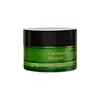What's inside
What's inside
 Key Ingredients
Key Ingredients

 Benefits
Benefits

 Concerns
Concerns

 Ingredients Side-by-side
Ingredients Side-by-side

Water
Skin ConditioningHexylene Glycol
EmulsifyingPolysorbate 20
EmulsifyingPropylene Glycol
HumectantSodium Hyaluronate
HumectantAnhydroxylitol
HumectantCucumis Sativus Fruit Extract
EmollientXylitol
HumectantXylitylglucoside
HumectantTocopheryl Acetate
AntioxidantDimethylsilanol Hyaluronate
HumectantSilica
AbrasiveMethylsilanol Mannuronate
Skin ConditioningBiosaccharide Gum-1
HumectantCaesalpinia Spinosa Fruit Pod Extract
Helianthus Annuus Sprout Extract
Skin ConditioningCarbomer
Emulsion StabilisingBis-C16-20 Isoalkoxy Tmhdi/PEG-90 Copolymer
Phenoxyethanol
PreservativeSodium Polyacryloyldimethyl Taurate
Emulsion StabilisingParfum
MaskingSodium Gluconate
Skin ConditioningSodium Hydroxide
BufferingHydroxyacetophenone
AntioxidantCaprylyl Glycol
EmollientSodium Benzoate
MaskingWater, Hexylene Glycol, Polysorbate 20, Propylene Glycol, Sodium Hyaluronate, Anhydroxylitol, Cucumis Sativus Fruit Extract, Xylitol, Xylitylglucoside, Tocopheryl Acetate, Dimethylsilanol Hyaluronate, Silica, Methylsilanol Mannuronate, Biosaccharide Gum-1, Caesalpinia Spinosa Fruit Pod Extract, Helianthus Annuus Sprout Extract, Carbomer, Bis-C16-20 Isoalkoxy Tmhdi/PEG-90 Copolymer, Phenoxyethanol, Sodium Polyacryloyldimethyl Taurate, Parfum, Sodium Gluconate, Sodium Hydroxide, Hydroxyacetophenone, Caprylyl Glycol, Sodium Benzoate
Water
Skin ConditioningGlycerin
HumectantDimethicone
EmollientCetearyl Olivate
Sorbitan Olivate
EmulsifyingSodium Hyaluronate
HumectantSerine
MaskingGlycine
BufferingAlanine
MaskingThreonine
Arginine
MaskingProline
Skin ConditioningLysine Hcl
Skin ConditioningGlutamic Acid
HumectantSodium PCA
HumectantPCA
HumectantSodium Lactate
BufferingUrea
BufferingSodium Chloride
MaskingCitric Acid
BufferingBetaine
HumectantAllantoin
Skin ConditioningFructose
HumectantMaltose
MaskingTrehalose
HumectantGlucose
HumectantPentylene Glycol
Skin ConditioningSynthetic Beeswax
Emulsion StabilisingPolyacrylate Crosspolymer-6
Emulsion StabilisingDimethicone Crosspolymer
Emulsion StabilisingDimethiconol
EmollientEthylhexylglycerin
Skin ConditioningCaprylyl Glycol
EmollientSodium Hydroxide
BufferingWater, Glycerin, Dimethicone, Cetearyl Olivate, Sorbitan Olivate, Sodium Hyaluronate, Serine, Glycine, Alanine, Threonine, Arginine, Proline, Lysine Hcl, Glutamic Acid, Sodium PCA, PCA, Sodium Lactate, Urea, Sodium Chloride, Citric Acid, Betaine, Allantoin, Fructose, Maltose, Trehalose, Glucose, Pentylene Glycol, Synthetic Beeswax, Polyacrylate Crosspolymer-6, Dimethicone Crosspolymer, Dimethiconol, Ethylhexylglycerin, Caprylyl Glycol, Sodium Hydroxide
 Reviews
Reviews

Ingredients Explained
These ingredients are found in both products.
Ingredients higher up in an ingredient list are typically present in a larger amount.
Caprylyl Glycol is a humectant and emollient, meaning it attracts and preserves moisture.
It is a common ingredient in many products, especially those designed to hydrate skin. The primary benefits are retaining moisture, skin softening, and promoting a healthy skin barrier.
Though Caprylyl Glycol is an alcohol derived from fatty acids, it is not the kind that can dry out skin.
This ingredient is also used as a preservative to extend the life of products. It has slight antimicrobial properties.
Learn more about Caprylyl GlycolSodium Hyaluronate is hyaluronic acid's salt form. It is commonly derived from the sodium salt of hyaluronic acid.
Like hyaluronic acid, it is great at holding water and acts as a humectant. This makes it a great skin hydrating ingredient.
Sodium Hyaluronate is naturally occurring in our bodies and is mostly found in eye fluid and joints.
These are some other common types of Hyaluronic Acid:
Learn more about Sodium HyaluronateSodium Hydroxide is also known as lye or caustic soda. It is used to adjust the pH of products; many ingredients require a specific pH to be effective.
In small amounts, sodium hydroxide is considered safe to use. However, large amounts may cause chemical burns due to its high alkaline.
Your skin has a natural pH and acid mantle. This acid mantle helps prevent harmful bacteria from breaking through. The acid mantle also helps keep your skin hydrated.
"Alkaline" refers to a high pH level. A low pH level would be considered acidic.
Learn more about Sodium HydroxideWater. It's the most common cosmetic ingredient of all. You'll usually see it at the top of ingredient lists, meaning that it makes up the largest part of the product.
So why is it so popular? Water most often acts as a solvent - this means that it helps dissolve other ingredients into the formulation.
You'll also recognize water as that liquid we all need to stay alive. If you see this, drink a glass of water. Stay hydrated!
Learn more about Water